Fear of Car Rides in Dogs and How You Can Help
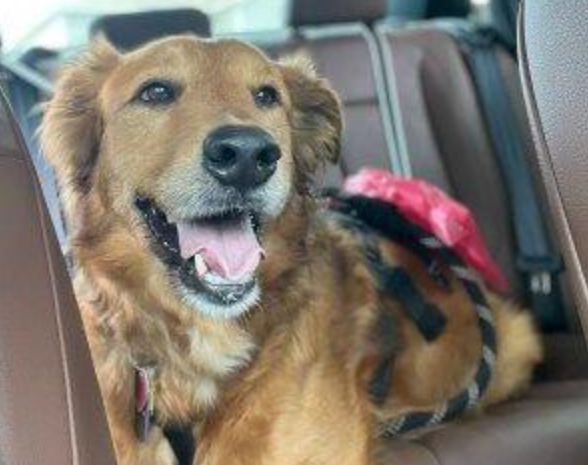
Dog Car Anxiety. Many puppies and dogs are afraid of car rides. Often this resolves by itself by taking the puppy to fun places in the car. But sometimes a more linear approach to treating car phobias is needed because the fear doesn’t go away or even gets worse over time.
Fun fact: If your puppy’s breeder took the time to desensitize the litter to the car and take them to a few places or just had them experience some fun car rides before they were 6 weeks old, car phobias are much less likely to happen.
But here you are now with your scared puppy that doesn’t want anything to do with car rides.
 Dog Car Anxiety
Dog Car Anxiety
If your puppy is already scrambling to get away from the car, change his emotions by playing near the car in a safe place of course. Games that work well are chasing treats around the car, doing hand targets (touch) around the car, playing tug of war, chasing you, or chasing a flirt pole.
It depends on your dog how often you will have to do this to change his emotion from being afraid of going towards the car to being happily excited. You are looking for happy butt wiggles before proceeding to the next step. This can take a few days or even weeks, it all depends on your dog. Changing emotions is not a race, slow and steady!
Your pup is now happily approaching the car, the next step is to open a car door, play, chase, eat treats, and all that fun stuff now happens once the car door is open. Again, look for happy butt wiggles to make sure you are on your way to changing your dog’s fear response.
What’s next?
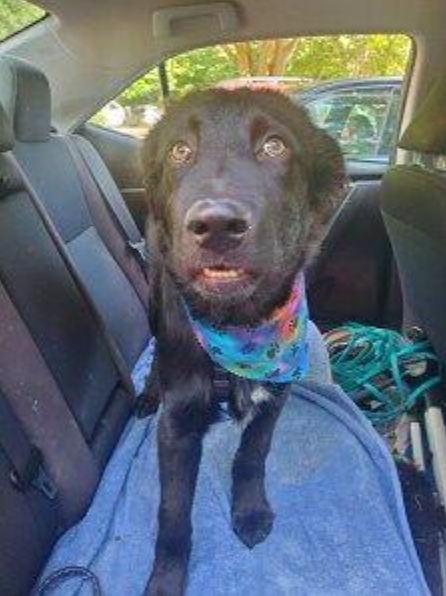
Playing, eating, and training in the car. You can start with two paws up on the car frame, or nose touching close to the car. Feeding meals in the car, playing tug of war, etc. Jumping up in the car or using a ramp or stool to hop in the car for treats or toys.
Your pup should be happily getting in the car now. So, you can feed meals in the car, possibly with the engine turned on but not driving yet.
Before you start driving, your pup should be taught to lay calmly in the car in his safe and designated area, this can be a crate, attached to a seat belt or a doggy car seat.
Perfect, your puppy can lay in the car in his spot for at least 5 to 10 minutes? Now it’s time to start driving, but you will only drive a few feet in your driveway. Back and forth, no longer than your pup can be calm. Increase the time of you driving slowly until you can drive to a close by park or another fun thing to do for your pup.
Yes, this seems like a long endeavor, but it will be worth it because you will be able to take your dog anywhere soon.
Extra challenges?
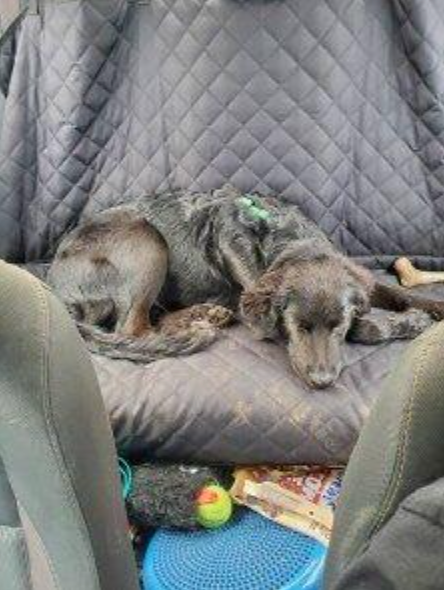
Your dog gets sick in the car? There are a few things you can try. Medication for motion sickness from your vet, covering the crate, training your dog to wear a thunder cap in the car can help decrease anxiety and motion sickness, anxiety medication from your vet in case you have to take your dog on a car ride that he is not ready for. You can also book an online session or two with a certified dog behaviorist.

Did you find this article useful? Would you like 100% free access to more articles like these, and free access to over 5,000 vetted pet care service professionals throughout the United States? Sign up here for a free Petworks account, and take 10% off your first booking, on us!
About the Author
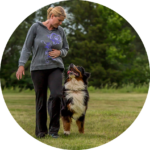 Andrea Marx CPDT-KA, CBCC-KA, CDBC, FFCP, My specialty is problem behaviors like aggression, anxiety, and shyness. For the last ten years, I have educated myself on treating animal behavioral problems safely and kindly. Lasting behavior change takes time, patience, and working together as a team.
Andrea Marx CPDT-KA, CBCC-KA, CDBC, FFCP, My specialty is problem behaviors like aggression, anxiety, and shyness. For the last ten years, I have educated myself on treating animal behavioral problems safely and kindly. Lasting behavior change takes time, patience, and working together as a team.
If you need treatment plans for behavior issues like separation anxiety, aggressive behaviors, or any other behavior modification and are committed to your dog’s well being please make an appointment with me.
About Us
 In 2021, Dr. Marty Goldstein DVM joined the pet care platform Petworks as an advisor in its Animal Nutrition care division. Dr Marty Nature’s Blend is on a mission to help your pets live their healthiest lives possible. Dr. Marty’s pet nutrition expertise and guidance has helped Petworks evolve and become the preeminent animal and pet nutrition consultation service for pet parents in North America.
In 2021, Dr. Marty Goldstein DVM joined the pet care platform Petworks as an advisor in its Animal Nutrition care division. Dr Marty Nature’s Blend is on a mission to help your pets live their healthiest lives possible. Dr. Marty’s pet nutrition expertise and guidance has helped Petworks evolve and become the preeminent animal and pet nutrition consultation service for pet parents in North America.
 In 2022, Blue Buffalo Founder Bill Bishop Jr. joined Petworks as Senior Advisor in our Animal Nutrition Care Division. Bill brings his extensive expertise in pet food innovation and business leadership. His guidance helps Petworks enhance our pet nutrition service offerings, helping to ensure that pet parents throughout the world receive trusted, science-backed nutritional support for their dogs, cats, and animals.
In 2022, Blue Buffalo Founder Bill Bishop Jr. joined Petworks as Senior Advisor in our Animal Nutrition Care Division. Bill brings his extensive expertise in pet food innovation and business leadership. His guidance helps Petworks enhance our pet nutrition service offerings, helping to ensure that pet parents throughout the world receive trusted, science-backed nutritional support for their dogs, cats, and animals.
 Petworks Co-Founder Kevin Kinyon is a life-long animal lover who works tirelessly to improve the lives of pets and their parents. Human and animal qualities he values most are integrity, humor, and empathy.
Petworks Co-Founder Kevin Kinyon is a life-long animal lover who works tirelessly to improve the lives of pets and their parents. Human and animal qualities he values most are integrity, humor, and empathy.
What Is An Animal Behaviorist?

Understanding animal behaviorists and enhancing the well-being of dogs and cats. Within the domain of pet care services, animal behaviorists wield a profound and transformative influence. Armed with a profound grasp of animal psychology and behavior, canine and feline behaviorists provide priceless insights and interventions to uplift the welfare of our cherished furry friends. Whether mitigating behavioral challenges or nurturing harmonious bonds between pets and their caretakers, animal behaviorists serve as linchpins in cultivating a gratifying and enriching existence for both dogs and cats. In this discourse, we delve into the realm of animal behaviorists, dissecting their methodologies, interventions, and the profound positive effects they exert on the lives of pets and their human companions. (more…)
Choosing a Good Dog For Young Kids in the Home
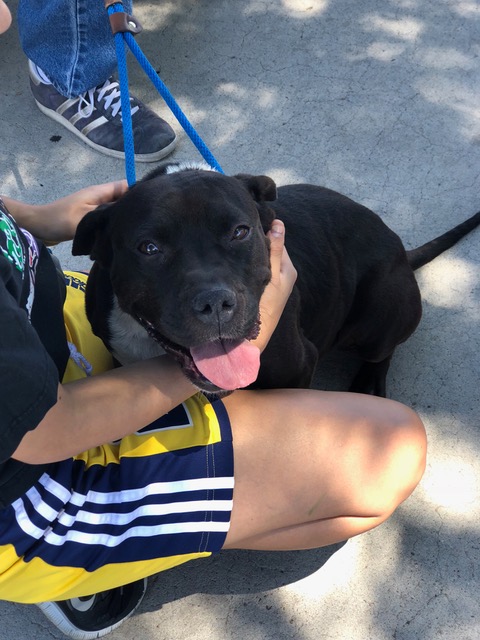
Best Dogs For Kids. Adopting a dog is one of the few times we can choose a family member. When people think of having a dog, they usually have visions of walking, hiking, going to an outdoor café, and just hanging out with a best friend. They want their dog and children to be best buddies. Unfortunately, this doesn’t always happen. As a dog trainer, I speak with many clients that just adopted a dog that bit their child, guards their food bowl, or tore up their house, due to anxiety. Choosing a dog is not simple anymore… (more…)
Animal Behaviorist or Pet Trainer: The Differences

Here’s the scenario: your pet recently began to do something really out of character. Maybe she started snapping at another household pet, or maybe he started to -gross!- eat his own poop. You know this calls for a professional’s input, but who can help? Should you bring in a pet trainer, or is this a case for a different kind of specialist known as an animal behaviorist? We’ll share the differences between the two pet pros so you can get the help you need. (more…)
Pet Poison Prevention Month
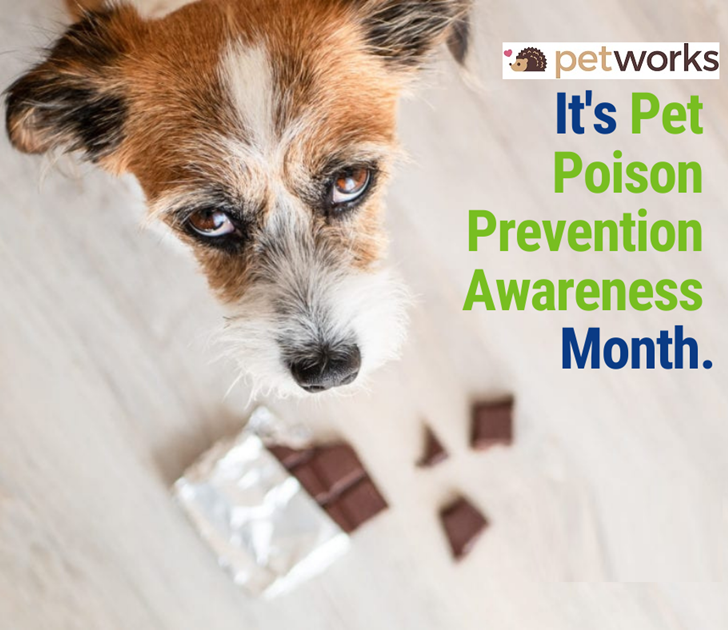
March is Pet Poison Prevention Month : Protecting Your Furry Friends. March is recognized as Pet Poison Prevention Month, a crucial time to raise awareness about the many hazards that can threaten our pets’ health. Accidental poisoning is one of the most common emergencies in veterinary clinics, and many of these incidents are preventable with proper education and precautionary measures. Understanding common household toxins, recognizing symptoms of poisoning, and taking preventive steps can help ensure the safety and well-being of our beloved animals.


